Project P2 | Kerstin Bartscherer
Formation, composition and role of extracellular vesicles in the ischemic heart
This project takes advantage of an ischemia model of highly regenerative spiny mice (Acomys) to ask how extracellular vesicles are formed in response to tissue damage and how they affect cardiac repair.

Infarcted spiny mouse heart. © Tim Koopmans
Project Summary
Prof. Dr. Kerstin Bartscherer
Osnabrück University
School of Biology/Chemistry
Research Group Animal Physiology

Ischemic heart disease is the most common cause of deaths world-wide, and its prevalence continues to increase with an aging population. It arises from a blockage of one of the coronary arteries, disrupting blood flow and subsequently oxygen supply to the heart tissue.
As a consequence, cardiomyocytes (CMs), muscle cells responsible for the contractile function of the heart, and other cells, such as endothelial cells forming blood vessels, die due to prolonged hypoxia. In surviving patients, the dying cells are replaced by a rigid scar, resulting in reduced heart function.
We could previously show that the heart of the spiny mouse (Acomys cahirinus), a small rodent known for its remarkable ability to regenerate full-thickness skin and cartilage, is protected from severe consequences after myocardial infarction (MI). In a comparative approach with non-regenerating mice (Mus musculus), single-cell RNA sequencing (scRNA-seq) of spiny mouse hearts indicated that a subpopulation of cardiac fibroblasts, which we observed after MI only in Acomys, but not in Mus, activate a number of genes encoding secreted and/or membrane-resident proteins. Some of those proteins are found on extracellular vesicles (EVs) that can transport proteins, lipids, nucleic acids and other biomolecules through the extracellular space, hence facilitating communication and membrane exchange between cells in a tissue.
EVs, in particular exosomes, have been linked to many pathological conditions, including cardiac injury and other cardiomyopathies. Here, we will investigate the formation and potential role of injury-induced EVs in the Acomys ischemic heart.
Project-related publications
Nguyen, P.D., Gooijers, I., Campostrini, G., Verkerk, A.O., Honkoop, H., Bouwman, M., de Bakker, E.M., Koopmans, T., Vink, A., Lamers, G.E.M., Shakked, A., Mars, J., Chocron, S., Bartscherer, K., Tzahor, E., Mummery, C.L., de Boer, T.P., Bellin, M., Bakkers, J. (2023) Interplay between calcium cycling and sarcomers directs cardiomyocyte redifferentiation and maturation during regeneration. Science 380, 758-764.
Tomasso, A., Koopmans, T., Lijnzaad, P., Bartscherer, K., Seifert, A.W. (2023) An ERK-dependent molecular switch antagonizes fibrosis and promotes regeneration in spiny mice (Acomys). Sci Adv 9, eadf2331.
Koopmans, T., van Beijnum, H., Roovers, E.F., Tomasso, A., Malhotra, D., Boeter, J., Psathaki, O.E., Versteeg, D., van Rooij, E., Bartscherer, K. (2021) Ischemic tolerance and cardiac repair in the African spiny mouse. NPJ Regen Med 6, 78.
Böser A., Drexler, H.C.A., Bartscherer, K. (2018). Tissue extracts for quantitative mass spectrometry of planarian proteins using SILAC. Methods Mol Biol 1774, 539-553.
Owlarn, S., Klenner, F., Schmidt, D., Rabert, F., Tomasso, A., Reuter, H., Mulaw, M., Moritz, S., Gentile, L., Weidinger, G., Bartscherer, K. (2017) Generic wound signals initiate regeneration in missing-tissue contexts. Nat Commun 8, 2282.
Reuter, H., März, M., Vogg, M.C., Eccles, D., Grifol-Boldu, L., Owlarn, S., Wehner, D., Adell, T., Weidinger, G., Bartscherer, K. (2015) beta-catenin-dependent control of positional information along the AP body axis in planarians involves a Teashirt family member. Cell Rep 10, 253-265.
Böser, A., Drexler, H.C.A., Reuter, H., Schmitz, H., Wu, G., Schöler, H.R., Gentile, L., Bartscherer, K. (2013) SILAC proteomics of planarians identifies Ncoa5 as a conserved component of pluripotent stem cells. Cell Rep 5, 1142-1155.
Gross, J.C., Chaudhary, V., Bartscherer, K., Boutros, M. (2012) Active Wnt proteins are secreted on exosomes. Nature Cell Biol 14, 1036-45.
Bartscherer, K., Boutros., M. (2008). Regulation of Wnt protein secretion and its role in gradient formation. EMBO Rep 9, 977-82.
Bartscherer, K., Pelte, N., Ingelfinger, D., Boutros, M. (2006) Secretion of Wnt ligands requires Evi, a conserved transmembrane protein. Cell 125, 523-533.








